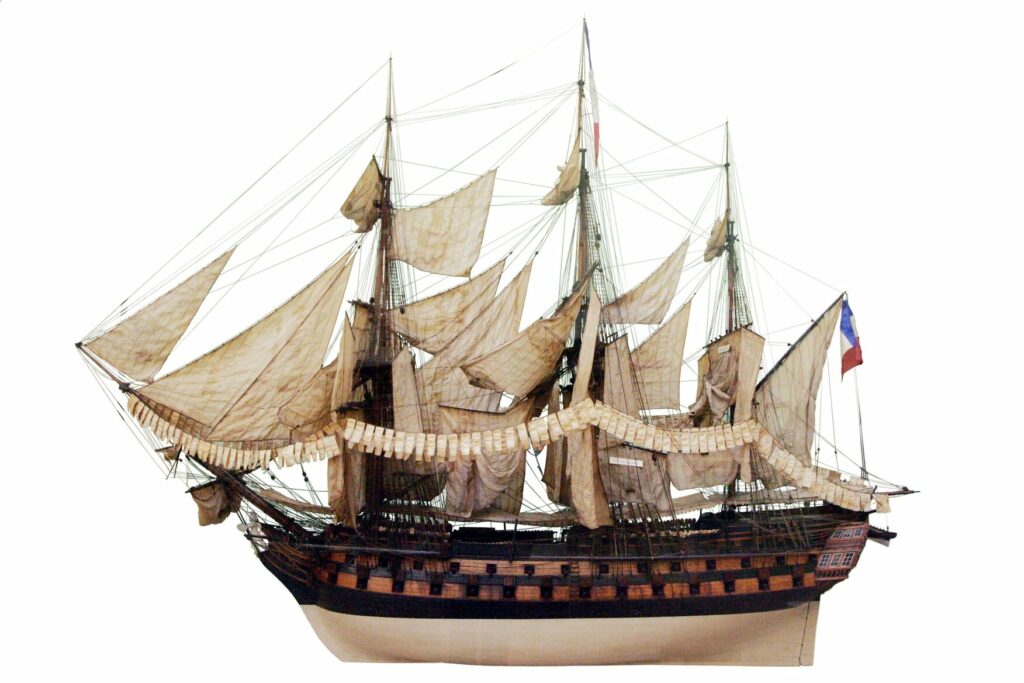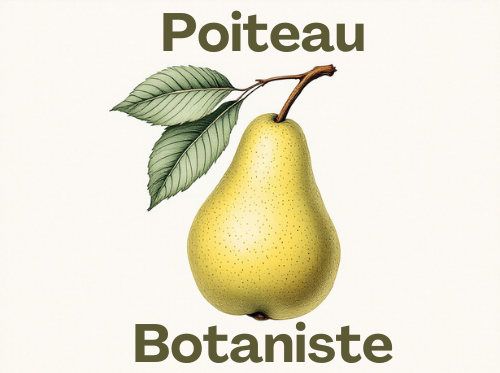A Scientific Journey to the Heart of the Antilles
At the end of the 18th century, France was in the midst of revolutionary turmoil. The Directory attempted to stabilize the country after the years of Terror, while tensions with other European powers remained high.
In the Antilles, Saint-Domingue is a major strategic issue: the leading colony producing sugar and coffee, it was shaken by the slave revolts initiated in 1791 and the rise to power of Toussaint Louverture.
It was in this context that Pierre-Antoine Poiteau , a young and passionate botanist, was chosen by André Thouin, of the Natural History Museum in Paris, to undertake a botanical exploration mission on the island. This expedition, although fraught with pitfalls, considerably enriched knowledge of tropical flora.
A start strewn with pitfalls
Even before setting foot on the soil of Santo Domingo , Pierre-Antoine Poiteau had to overcome numerous administrative and logistical obstacles which almost compromised his botanical expedition.
- He requested official instructions from the Minister of the Navy , but these were slow in reaching him, leaving him in uncertainty.
- Its financing was made possible thanks to Saint-Amans, who sold wheat to build up a modest nest egg, allowing him to undertake his journey.
- In Agen, a setback prevented him from obtaining a passport, which led to his arrest in Bordeaux . Fortunately, he was able to count on the intervention of Professor Latapie, who pleaded in his favor and secured his release.
- When he finally arrived in Rochefort, he was astonished to discover that neither his instructions nor his commission were waiting for him there. Despite his repeated reminders, no document was given to him.
Faced with this situation and determined to accomplish his mission , Poiteau made a bold decision: he embarked without official authorization on board the Fougueux , an imposing 74-gun ship of the line, anchored in the harbor off the island of Aix .
On April 7, 1796 , he left France, ready to brave the unknown and devote his talent to the study of tropical flora. 🌿🚢
Crossing to Santo Domingo
The voyage took place within a naval division composed of the Watigni (74 guns), flagship of the commissioners, the Fougueux , where Poiteau, Generals Rochambeau and Mirdoudet were, as well as a large staff, and the frigate La Tortue (44 guns).

Although the crossing was generally calm, a sudden gust of wind disrupted the routine on board: in the middle of a meal, the guests were thrown to the ground, while the topmast and the foremast of the Fougueux broke , delaying the fleet by a day.
On 21 Floréal (10 May) , land was in sight, and on 22 Floréal (11 May 1796) , two English vessels, posted in ambush, fled after having recognized the French fleet.
A hectic arrival in Santo Domingo
When Pierre-Antoine Poiteau finally set foot in Santo Domingo , his botanical adventure did not get off to a promising start. As soon as he arrived, he left the port and ventured into a lush savannah , captivated by the diversity of plants that lay before him. Caught up in his observations, he did not see night fall and found himself alone, without resources, in an unknown city .
Wandering the dark streets of Cap-Français , he finally reached the Government Gate . Penniless for lodging or even food, he took refuge under a staircase , hoping to spend the night discreetly. But barely had he settled in when an aide-de-camp to Commissioner Sonthonax spotted him despite the darkness. His tired appearance, worn clothes and hesitant posture aroused suspicion. Poiteau tried to explain himself, but his answers were not enough to dispel the doubt: he was immediately taken to the guardhouse , under surveillance.
Against all odds, he later realized he had been lucky: his night in the cell was much more comfortable than under the stairs where he had intended to sleep ! The next day, the officer came back to question him. Poiteau was finally able to explain who he was and what his scientific mission was. The officer, convinced, released him on his word , since he had no documents proving his identity nor any contacts on site to attest to his legitimacy.
A botanical mission despite the obstacles
Once free, Poiteau immediately returned to work, determined to carry out his mission despite the political and economic tensions that shook the colony .
🌱 Rehabilitation of the Cape Botanic Garden : He undertook to
bring the garden back to life , by increasing the number of seedlings and plantings in order to preserve and study the tropical flora.
🌿 Botanical Exploration of tropical hills : He delved into the mountains and lush forests, collecting and classifying many still little-known species.
📦 Three shipments of rare seeds to the Paris Museum : His discoveries were sent to France, including 289 species little or poorly known to botanists of the time.
📜 An exceptional herbarium : He created a collection of
1,200 dried plants , accompanied by precise descriptions, at the request of
General Hédouville

Poiteau exploring the flora of Saint Domingue in 1796 (Illustration)
It was in this context that he met a young 19-year-old soldier , Pierre Jean François Turpin , who had a natural talent for drawing. Their friendship, forged around a shared passion for botany, gave birth to one of the most significant scientific collaborations of the 19th century.
Together, they explored the local flora , particularly on Tortoise Island , where they were hosted by a wealthy landowner, Mr. Labattue. Turpin, under Poiteau’s influence, perfected his art and became one of the greatest botanical illustrators of his time.
🎶 The Incredible Anecdote of the Clarinet
At the time when Toussaint Louverture launched the siege of Jacmel, a general levy was ordered at Cap-Français to send men as reinforcements.
Poiteau, who was there at the time, narrowly escaped this mobilization… thanks to a surprising misunderstanding! Housed with army musicians and practicing the clarinet , he was mistaken for one of them.
Fortunately, the music was not requisitioned for the expedition, allowing him to avoid combat and continue his botanical exploration.
An escape as unexpected as it is melodious! 🎨🌿🎵
A Hasty Departure to the United States
In 1801 , the political situation deteriorated. The threat of a new insurrection forced Poiteau to leave Saint-Domingue to save his collections . Thanks to the support of the American consul Stevens, he embarked for the United States , where he gave up some of his specimens before being repatriated to France under the protection of consul Pichon .
During his stay in the United States, he:
- Visited several gardens and greenhouses , carefully studying the state of American horticulture.
- Spent a notable amount of time in Philadelphia .
- Observed the flora of the provinces of Virginia , Maryland and Pennsylvania .
- Made a detour to Mount Vernon to pay his respects at the tomb of the recently deceased George Washington
Return to France and Scientific Heritage
Poiteau returned to Bordeaux in 1802, in a precarious situation. Upon his return from Santo Domingo , Poiteau found himself without resources , forced to ask for hospitality from the gardener of the Bordeaux botanical garden .
Determined to reach Paris with his precious botanical collections, he sought help from the Minister of the Navy , hoping to obtain financial support to undertake his journey.
Informed of the situation by André Thouin , Minister Jean-Antoine Chaptal recognized the importance of his discoveries and granted him aid of 1,000 francs , thus allowing him to continue his journey to the capital.
His contributions were quickly recognized:
- An official report confirmed that he had brought back 600 drawings of plants and extensive botanical documentation .
- He received a gratuity of 2,400 francs for his collections.
- He proposed to return to Santo Domingo to complete his botanical exploration, but the political context prevented him from doing so.
- He wrote a draft of a work entitled Florule de Saint-Domingue , the manuscript of which was sent to Antoine-Laurent de Jussieu , but this document was never published.
Despite these obstacles, his botanical work in Santo Domingo was a turning point in his career, paving the way for future major publications. Thus, in 1807 , he co-published with Turpin the second edition of Duhamel du Monceau ‘s Traité des Arbres Fruitiers .
Conclusion
Pierre-Antoine Poiteau’s journey to Santo Domingo was a major scientific undertaking, considerably enriching tropical botany.
Despite an unstable political context, he managed to build up a valuable collection and establish a decisive collaboration with Turpin.
Even today, his contributions and illustrations remain essential references for botany enthusiasts.
Also read: Discover his major works, such as Histoire Naturelle des Orangers and Pomologie Française.
An intriguing anecdote: the vagaries of history
The ship Le Fougueux , which had transported Poiteau to Saint-Domingue in 1796, met a tragic end.
After fighting at the famous Battle of Trafalgar , it was captured by the British before sinking in a storm in 1805.
Its wreck was found in 2016 by a team of researchers from the University of Cadiz (Spain).
